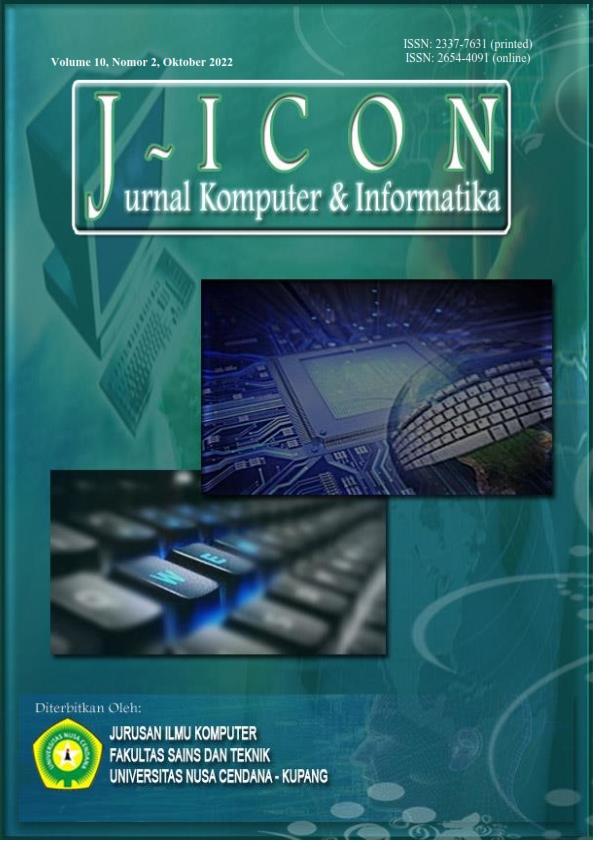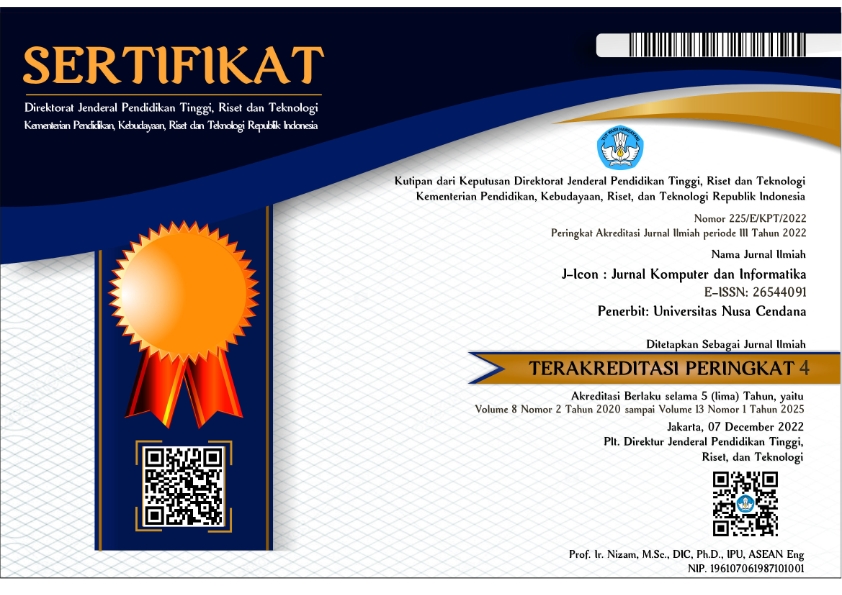COST EFFICIENCY COMPARISON ANALYSIS OF USING LINUX CLEAROS AND MICROTIK FOR SOHO NEEDS
Abstract
Currently, various sectors of life and organizations require the availability of computer networks and the internet to be able to provide faster and optimal services, one of which is the Small Office Home Office (SOHO). Internet access requires management so that the internet network can be allocated according to the needs of each field and requires cost calculations according to the ability of the organization. Linux ClearOS and Mikrotik are two operating system platforms commonly used for network management, including SOHO. The test was conducted in the form of a comparison between ClearOS Linux and Mikrotik in terms of cost, basic network capabilities (bandwidth manager, wifi, proxy, load balancing, user management), availability of security features, and additional device requirements. The test results show that for the same needs on SOHO, Linux ClearOS has advantages in terms of lower costs and complete features, so it is more recommended than Mikrotik
Downloads
References
R. Pambudi and M. A. Muslim, “Implementasi Policy Base Routing dan Failover Menggunakan Router Mikrotik untuk Membagi Jalur Akses Internet di FMIPA Unnes,” Jurnal Teknologi dan Sistem Komputer, vol. 5, no. 2, pp. 57–61, 2017, doi: 10.14710/jtsiskom.5.2.2017.57-61.
S. W. Aji and R. S. Kharisma, “Manajemen User Dan Pengelolaan Bandwidth Pada Jaringan Hotspot Menggunakan Router Mikrotik,” INTECHNO Journal-Information Technology Journal, vol. 1, no. 2, pp. 1–5, 2019.
I. P. A. E. Pratama and I. P. G. E. Y. Arista, “PENERAPAN PROXY SERVER BERBASIS CLEAROS 7 UNTUK MANAJEMEN AKSES PADA INTERNET: PENERAPAN PROXY SERVER BERBASIS CLEAROS 7 UNTUK MANAJEMEN AKSES PADA INTERNET,” Jurnal Mantik, vol. 3, no. 1, pp. 66–70, 2019.
B. Nguyen, “Network Security and Firewall: ClearOS-A Linux Open Source Firewall,” Bachelor’s Thesis, Helsinki Metropolia University of Applied Sciences, 2016. [Online]. Available: https://www.theseus.fi/handle/10024/105907
S. Ristov and M. Gusev, “Performance vs cost for Windows and linux platforms in Windows Azure cloud,” in 2013 IEEE 2nd International Conference on Cloud Networking (CloudNet), 2013, pp. 214–218. doi: 10.1109/CloudNet.2013.6710581.
W. Wahyudi and S. Supini, “MONITORING DAN ANALISA TRAFFIK JARINGAN DENGAN MENGGUNAKAN MIKROTIK ROUTEROS,” Jurnal Teknologi Informasi, vol. 3, no. 2, p. 13, 2017, doi: 10.52643/jti.v3i2.95.
D. Leman, “Load Balancing 2 Jalur Internet Menggunakan Mikrotik Round Robin,” RJOCS (Riau Journal of Computer Science), vol. 5, no. 2, pp. 137–143, 2019, doi: 10.30606/rjocs.v5i2.1767.
“ClearOS Overview.” https://www.clearos.com/clearos-overview (accessed Sep. 09, 2022).
“Berbagai Level RouterOS dan Kemampuannya.” http://mikrotik.co.id/artikel_lihat.php?id=7 (accessed Sep. 09, 2022).
A. E. Setyanto, “Memperkenalkan kembali metode eksperimen dalam kajian komunikasi,” Jurnal Ilmu Komunikasi, vol. 3, no. 1, pp. 37–48, 2006, doi: 10.24002/jik.v3i1.239.
Copyright (c) 2022 Putu Veda Andreyana, I Made Sunia Raharja, I Putu Agus Eka Pratama

This work is licensed under a Creative Commons Attribution 4.0 International License.
The author submitting the manuscript must understand and agree that if accepted for publication, authors retain copyright and grant the journal right of first publication with the work simultaneously licensed under a Creative Commons Attribution (CC-BY) 4.0 License that allows others to share the work with an acknowledgment of the work’s authorship and initial publication in this journal.
 Putu Veda Andreyana(1)
Putu Veda Andreyana(1)




